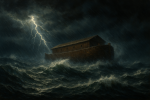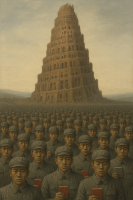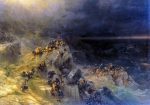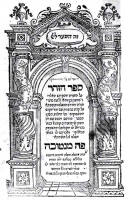
Dominion After Service
Two diets framed early humanity. In Eden, humans ate only plants; meat was forbidden. The Talmud teaches: Rav Yehuda says that Rav says: Meat was

Two diets framed early humanity. In Eden, humans ate only plants; meat was forbidden. The Talmud teaches: Rav Yehuda says that Rav says: Meat was

The Waters Above and Below Introduction At first glance, the Flood narrative reads like a stark morality tale: humanity sins; G‑d decrees destruction; one righteous

Quanta of Thought | Parashat Noach The story of the Tower of Babel seems, at first glance, like a triumph of human unity. All spoke

Everyone marvels at the beauty of a rainbow—its perfect arc, its radiant colors. Yet, in truth, the rainbow doesn’t exist out there. The spectrum of

In the aftermath of the Great Flood, God places a rainbow in the sky as an eternal covenant with humanity. Yet this celestial arc is
When the world was overwhelmed by chaos, Noaḥ found grace in the eyes of G-d (Genesis 6:8). The Zohar explains that “grace” (ḥein) is a
Structurally identical biblical accounts of creation, destruction, and restoration are viewed as a manifestation of dialectic triad thesis-antithesis-synthesis.

Noah’s flood was a cataclysmic event with no parallels in recorded history. All of humanity (along with flora and fauna)—except for Noah and his family
In the six hundredth year of Noah’s life, in the second month, on the seventeenth day of the month, on the same day were all

A light shalt thou make to the ark…with lower, second, and third stories shalt thou make it. (Genesis 6:16) We mentioned in the previous posts

A light shalt thou make to the ark, and to a cubit shalt thou finish it upward; and the door of the ark shalt thou

Make thee an ark of gopher wood; with rooms shalt thou make the ark, and shalt pitch it within and without with pitch” (Genesis 6:14)

Time is a storm in which we are all lost. ” (William Carlos Williams, Introduction to “Selected Essays”) I always had a hard time relating

At the end of the first chapter of the Torah, Genesis (Bereshit), G‑d regrets, as it were, creating humanity that became depraved: And the Lord

In the six hundredth year of Noah’s life, in the second month, on the seventeenth day of the month… all the fountains of the great